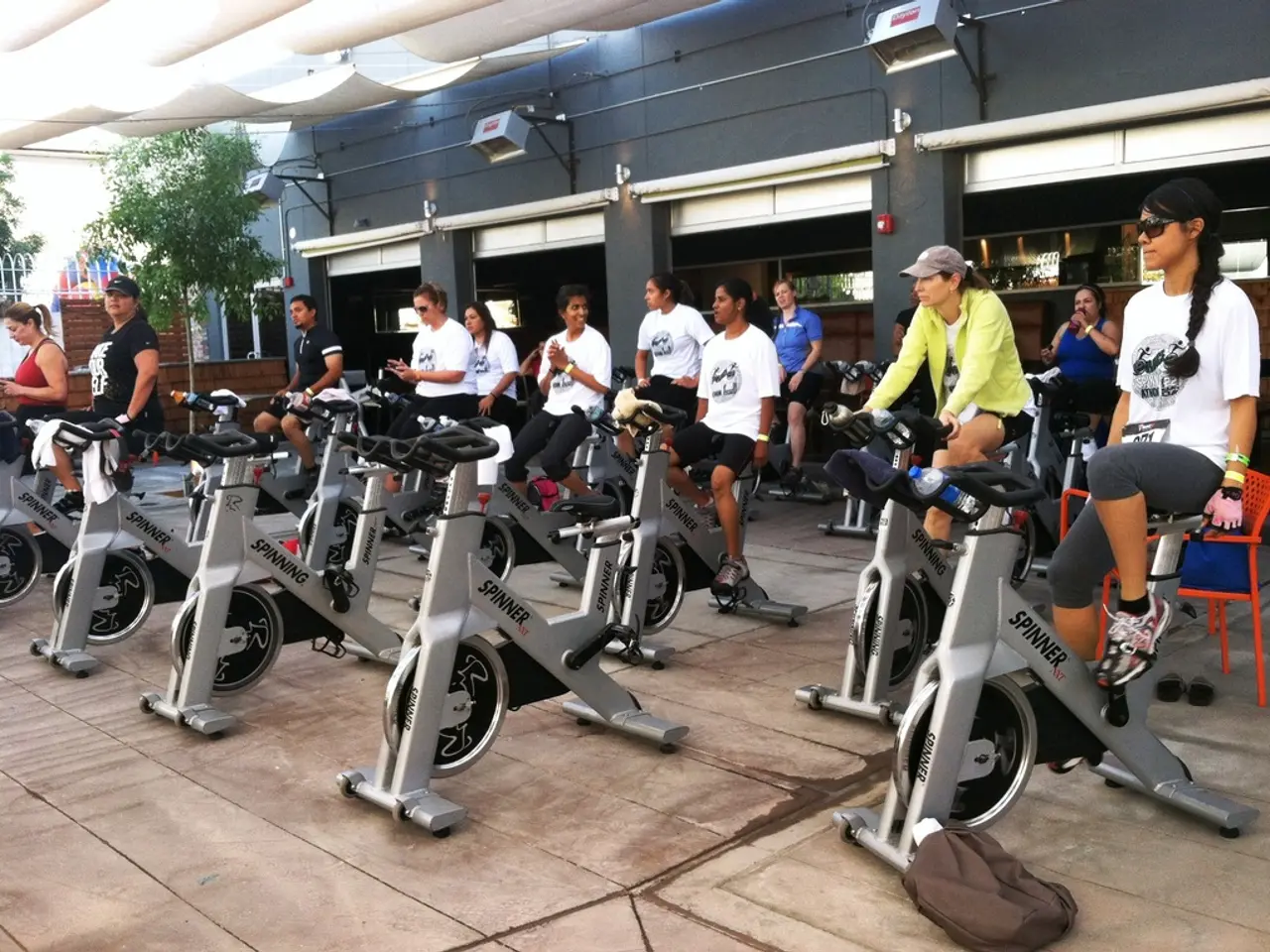Transforming from Couch Potato to Fitness Star: Your Extreme Makeover Blueprint
In the journey from a sedentary lifestyle to a fitness enthusiast, it's essential to approach the transition with a clear mindset and realistic goals. Here's a comprehensive guide to help you navigate this transformation effectively.
**Mindset and Goal-Setting**
Start by setting clear, achievable goals, broken down into smaller milestones to avoid feeling overwhelmed. Consistency is key, so use event-based cues, such as "after work, I go for a walk," to establish a routine. View fitness as a lifestyle change, not a temporary fix, and celebrate small wins to boost your confidence and long-term adherence.
**Building Strength and Endurance**
Begin with a manageable program that incorporates both strength training and cardiovascular exercises. A weekly schedule including three strength training days with compound exercises like squats, bench press, and rows, combined with fasted morning walks or cardio, can help build endurance. Include rest or active recovery days to allow muscles to heal and reduce injury risk. Progressively increase intensity by adding reps, sets, weight, or more challenging exercise variations every few weeks.
**Nutrition**
Pair your workout routine with balanced nutrition focused on whole foods rich in protein, healthy fats, and complex carbohydrates to fuel workouts, build muscle, and aid recovery. Avoid drastic dieting; instead, aim for sustainable eating habits compatible with your fitness goals.
**Staying Motivated**
Use structured workout logs and habit tracking to maintain accountability while reinforcing progress towards goals. Incorporate variety in workouts to keep routines interesting and encourage joy in fitness. Remember that initial phases focus on building fitness habits neurologically and psychologically, making exercise feel natural and less like a chore over time.
**In Summary**
Begin with a simple, structured program that balances strength, cardio, flexibility, and rest. Foster a consistent, goal-oriented mindset supported by habit cues. Eat sensibly to fuel progress, and maintain motivation by tracking and enjoying the process. Consult a fitness professional or physician before starting any new program, especially if inactive for a long time or with medical conditions.
This approach maximizes sustainability and effectiveness in your fitness journey from sedentary to enthusiast. Remember to use active rest during downtime, set weekly, specific, measurable, and attainable goals, and prioritize sleep for optimal recovery. Celebrate every victory, no matter how small, to recognise progress and stay motivated.
[1] American College of Sports Medicine. (2018). ACSM's resources for the fitness professional. Human Kinetics. [2] Schneider, T. (2017). The power of habit: Why we do what we do in life and how to change. Simon & Schuster. [3] Berardi, J., & Berardi, P. (2017). The metabolic advantage: The 5-hour revolutionary diet. Rodale Books. [4] Tudor-Locke, C., & Bassett Jr, D. R. (2011). The stepwise approach to pedometer-based walking programs for weight loss. Obesity Reviews, 12(5), e433-e439. [5] American Heart Association. (2018). ACSM's resources for the fitness professional. Lippincott Williams & Wilkins.
- To maintain a fitness enthusiast lifestyle, start by setting clear, achievable goals that are divided into smaller milestones to prevent feeling overwhelmed.
- Achieving consistency is crucial, so use event-based cues to establish a routine, likewalking after work each day.
- View fitness as a permanent lifestyle change rather than a temporary fix, and celebrate small successes to boost confidence and long-term commitment.
- Begin with a manageable fitness program that integrates strength training and cardiovascular exercises for building endurance.
- Incorporate compound exercises like squats, bench press, and rows into your strength training routine, and combine them with fasted morning walks or cardio.
- Schedule three days per week for strength training, and allocate rest or active recovery days for muscle healing and injury prevention.
- Progressively increase intensity by adding reps, sets, weight, or changing exercise variations every few weeks.
- Balance your workout routine with nutritious meals focusing on protein, healthy fats, and complex carbohydrates to fuel workouts, build muscle, and facilitate recovery.
- Avoid extreme dieting; instead, opt for sustainable eating habits consistent with your fitness objectives.
- Maintain motivation by using workout logs, habit tracking, and varying your workouts to keep routines engaging.
- In the initial stages, focus on building exercise habits neurologically and psychologically, aiming to make exercise feel natural and less like a chore.
- For optimal results and safety, consult a fitness professional or physician before starting any new program, especially if inactive for a prolonged period or if you have medical conditions.




